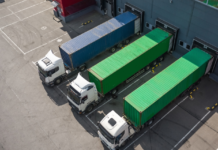China on Saturday launched seven more Free Trade Zones (FTZs) including several in inland areas for the first time, a move which is expected to accelerate the country’s opening-up and boost the Belt and Road Initiative, China’s Ministry of Commerce announced.
The inland FTZs will be opened in Henan, Sichuan, Shaanxi and Hubei provinces, as well as in Chongqing. The two new coastal FTZs will be in provinces of Liaoning and Zhejiang. The seven bring the country’s total number of FTZs to 11.
Vice-Commerce Minister Wang Shouwen said the new FTZs are established based on the operation mode and experiences gained from Shanghai and other existing coastal FTZs, with well-developed, state-level new bonded zones and high-tech parks. Each covers less than 120 square kilometres and consists of three subareas.
The central government approved the latest group of FTZs in August. The State Council has issued the general developing plans for them.
Among them, Shaanxi will focus on trade connections with economies related to the Belt and Road Initiative, while Henan will build itself into a major international logistics and transportation centre.
Hubei will build a base for high-tech industries and facilitate the development of the Yangtze River Economic Belt.
“These plans will help deepen reforms to streamline administration, delegate power, strengthen regulations and improve services, as well as expand opening-up in inland provinces,” said Wang Ning, vice-governor of Sichuan.
The move came nearly four years after the launch of China’s first FTZ in Shanghai to pilot reforms aimed at opening wider to foreign investment and easing restrictions on capital flows. China also set up FTZs in Tianjin, Fujian and Guangdong in 2015.
Hubei Vice-Governor Tong Daochi said the new FTZs will help facilitate investment and further liberalise trade in commodities.
Bai Ming, a researcher at the Chinese Academy of International Trade and Economic Cooperation, said, “Western provinces and autonomous regions such as Yunnan, Guangxi and Xinjiang are also likely to be selected to build FTZs.”























